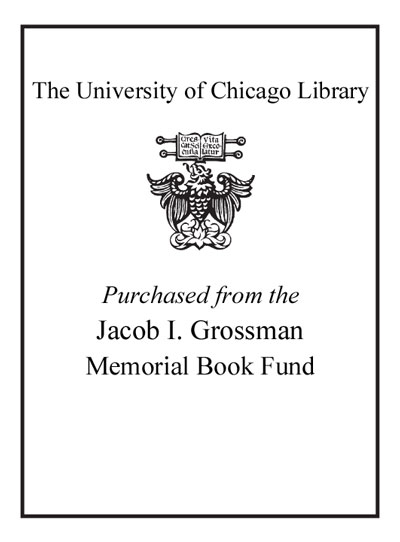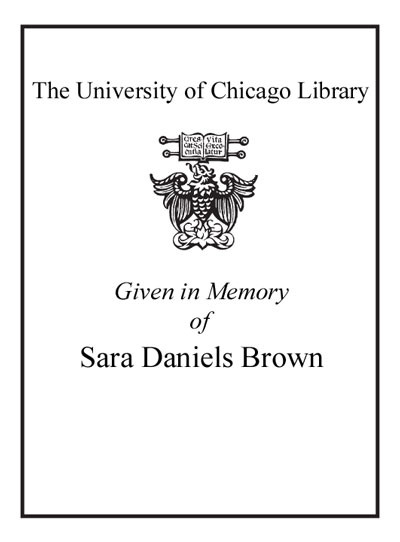Transition--the first ten years : analysis and lessons for Eastern Europe and the former Soviet Union
Saved in:
| Imprint: | Washington, D.C. : The World Bank, c2002. |
|---|---|
| Description: | xxxii, 128 p. : ill. ; 28 cm. |
| Language: | English |
| Subject: | |
| Format: | E-Resource Print Book |
| URL for this record: | http://pi.lib.uchicago.edu/1001/cat/bib/4607993 |
Table of Contents:
- Foreword
- Acknowledgments
- Overview
- The Quest for Growth: Promoting Discipline and Encouragement
- The Flipside: Protection and Discouragement
- Shading the Classification
- New Enterprises Spur Economic Growth
- When Is Transition Over?
- Do Central Europe and the Baltics Point the Way Forward?
- Can We Have It Both Ways: Encouragement without Discipline?
- Learning from China?
- Institutions Are Important, but So Are Policies
- The Political Economy of Discipline and Encouragement
- Shifting Policy Priorities to Account for Experience and New Conditions
- Conclusions
- Annex 1.. Discipline and Encouragement: The Reform Agenda
- Part 1.. The First Decade in Transition
- 1.. How Did Transition Economies Perform?
- Output Fell Sharply
- Industry Shrank--Services Grew
- Private Enterprises Overtook the State Sector
- Exports Rose--Moving Toward Industrial Countries
- Poverty Increased Sharply
- 2.. Explaining Variation in Output Performance
- Did Initial Conditions Affect Performance?
- External Economic Shocks Delayed Recovery
- Policies--Do They Matter?
- What Initial Conditions Matter and When Do They Matter?
- What If Policies Themselves Are Endogenous?
- Does the Speed of Reform Matter?
- Annex 2.1.. Summary of Cross-Country Empirical Literature on Growth in Transition Economies
- Annex 2.2.. Additional Empirical Analysis
- Part 2.. Policy and Institutional Challenges Ahead
- 3.. The Quest for Growth
- A Tale of Two Approaches
- The Associated Fiscal Adjustment
- ...And the Role of Labor Markets
- 4.. Discipline and Encouragement
- New Enterprises Drive the Transition
- A Small Number of High-Productivity Small Enterprises Is Not Enough
- Can We Have It Both Ways, That Is, Protecting Old Inherited Enterprises and Encouraging New Enterprises?
- Annex 4.1.. Assumptions for Small and New Enterprises
- Annex 4.2.. Implications of the Higher Productivity of SMEs
- 5.. Imposing Discipline
- Soft Budget Constraints Can Create Macroeconomic Crises
- Nonpayments Weaken the Incentives for Efficiency and Restructuring
- Exit Mechanisms--Implement Now, Revise Later
- Competition Is Linked to Innovation and Growth
- 6.. Extending Encouragement
- Corruption and Anticompetitive Practices Mar the Investment Climate
- Enterprises Lack Confidence in Legal and Judicial Institutions
- Financial Deepening Is Slow but Progressing
- Privatization Attracts Foreign Direct Investment, and Positive Spillovers Follow
- Tax Reform: Broadening the Base and Lowering Rates
- Intergovernmental Fiscal Relations Supporting Discipline and Encouragement
- 7.. Privatization: Lessons and Agenda for the Future
- Traditional Privatization or Rapid Privatization?
- Why Countries Did What They Did
- Were Vouchers a Mistake and Other "What Ifs"
- Summarizing Lessons
- 8.. Supportive Social Policies
- Reforming Pension Systems
- Social Assistance Should Protect Children and the Most Destitute, Adding More as Budgets Allow
- Severe Cuts Have Compromised the Quality of Education
- Containing Costs Will Make Health Care Affordable for Those Who Need It Most
- Part 3.. The Political Economy of Discipline and Encouragement
- 9.. The Winners and Losers from Discipline and Encouragement
- Who Wins and Who Loses?
- The Government Must Be Credible and Able to Constrain Oligarchs and Insiders
- 10.. Classifying Political Systems in Transition
- Competitive Democracies Have High Political Contestability
- ...and High Government Turnover
- 11.. Political Systems Influence the Choice of Economic Reforms
- Political Systems Create Rent-Seeking Opportunities
- How Do Political Systems Affect Economic Reform?
- 12.. Confronting the Political Challenge
- For Concentrated Political Regimes, Mobilizing Potential Winners
- For War-Torn Political Systems, Restoring Stability and Reducing Uncertainty
- For Noncompetitive Political Systems, Taking Advantage of State Capacity
- For Competitive Democracies, Using Momentum to Build Coalitions for Reform
- Conclusion
- Selected Bibliographic Guide to the Political Economy of Transition
- References
- Boxes
- 1. Increased Inequality
- 1.1. Limits of GDP Statistics for Transition Economies
- 2.1. The Regional Impact of the Global Financial Crisis and Recovery
- 3.1. The Business Environment and Enterprise Performance Survey
- 3.2. The Problem of Tunneling
- 4.1. Can the CIS Learn from China's Reform Experience?
- 4.2. The German Experience
- 4.3. Belarus
- 5.1. External Debt and Fiscal Sustainability in the Low-Income CIS Countries
- 6.1. Reducing the Cost of Entry and Doing Business in Armenia
- 7.1. Historical Counterfactuals: Mass Privatization in Russia
- Figures
- 1. Winners and Losers from Reform
- 1.1. Changes in Real Output, 1990-2001
- 1.2. Output Growth Rates, 1990-2001
- 2.1. Progress in Policy Reform, 1990s
- 3.1. Productivity Distribution of Old, Restructured, and New Enterprises
- 3.2. Performance of Old and New Enterprises, 1996-99
- 4.1. Private Sector Share in GDP, 1999
- 4.2. Share of Employment in Small Enterprises, 1989-98
- 4.3. Share of Value Added in Small Enterprises, 1989-98
- 4.4. Value Added per Employee in Small Enterprises, 1998
- 4.5. Index of GDP and Shares of Value Added and Employment Accounted for by Small Enterprises, 1989-98
- 4.6. Employment and GDP, 1990-98
- 4.7. Soft Budget Constraints and Employment in Small Enterprises, 2000
- A4.1. Factor Price Frontier: SMEs and the Rest of the Economy
- A4.2. Efficiency Gain from 10 Percent Factor Reallocation to the SME Sector
- 6.1. Insecurity of Property Rights in Transition Economies, 1999
- 6.2. Quality of Legal Drafting in Transition Economies, 1999
- 6.3. Quality of Judiciary in Transition Economies
- 6.4. Domestic Credit by Deposit Money Banks to the Private Sector, 1998
- 6.5. Stock Market Capitalization and Per Capita Income, 1998
- 6.6. Operating Costs to Total Assets in the Banking Sector, 1997
- 6.7. Interest Rate Spreads, 1998
- 6.8. Cumulative Foreign Direct Investment Per Capita and Employment in Small Enterprises, 1998
- 8.1. Public Expenditures on Education in Transition Economies, 1998
- 8.2. Health Expenditures, 1998
- 9.1. Winners and Losers from Reform
- 10.1. Classifying Political Systems in Transition Economies, 1990-99
- 10.2. Veto Points Index, 1989-99
- 10.3. Main Political Executive Turnovers, 1989-99
- 11.1. Political Systems and Economic Reform Outcomes, 2000
- 11.2. State Capture Index, 1999
- Tables
- 1.1. The Transition Recession
- 1.2. Composition of Output, 1990-91 and 1997-98
- 1.3. Private Sector Growth, 1990s
- 1.4. Export Growth and Destination, 1990s
- 1.5. Main Recipients of Foreign Direct Investment, 1992-99
- 1.6. Average Poverty Rates, 1990 and 1998
- 1.7. Changes in Inequality during the Transition, Various Years
- A2.1. Regression of Average Growth on Initial Conditions, 1990-99
- A2.2. Regression of Annual Output Growth on Policies and Initial Conditions Allowing for Differential Effects Early in Transition, 1990-99
- 4.1. SMEs Have Higher Labor Productivity, 1998
- A4.1. Differences between New Enterprises and Small Enterprises, 1995 and 1998
- 7.1. Methods of Privatization of Medium-Sized and Large Enterprises
- 8.1. Reform Options for Social Protection Programs
- 8.2. Student-Teacher Ratios in Basic Education, 1990 and 1997


